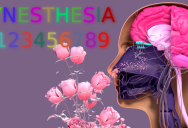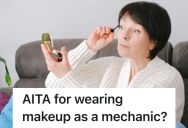Study Finds A Potential Genetic Link Between Autism And Synesthesia

Twin studies are so incredibly interesting, whether you’re a common person or a scientist looking to study one thing or another.
Now, scientists are using twins to potentially uncover a link between autism and synesthesia – a “crossing of wires” between sensory processes in the brain, like being able to “taste” smells or “hear” pictures.
Researchers had previously observed that people with autism are more likely to have synesthesia, but until now, they haven’t understood why the link might exist.

Synesthesia also tends to run in families, which makes them think there could also be a genetic component to the phenomenon – and that’s when they decided to consult the data from the Child and Adolescent Twin Study in Sweden (CATSS).
The final sample, from twins born between 1999 and 2003, included 2131 pairs of twins. 2/3 were non-idental (split pretty evenly between same sex and opposite sex) while the remaining 1/3 were identical twins.
They were all screened for common types of synesthesia and for autistic traits.
The results showed that those who self-reported synesthesia also tended to report “repetitive behaviors, restricted interests and attention to detail,” which are traits frequently associated with autism.
“The association between individual differences in synaesthesia and autistic traits was estimated to be predominantly under genetic influence and seemed to be mainly driven by non-social autistic traits (repetitive behaviours, restricted interests and attention to detail).”
They concluded that the genetic component played the strongest role, though for some types of synesthesia (like the one in which numbers and letters are associated with colors), environment also seems to be a factor.

The study team acknowledges that the fact that they relied on self-reporting and the fact that not all types of synesthesia were considered are both detractors from their findings.
Still, they believe it’s a solid basis on which to build further conclusions.
“We hope that our findings will inspire future research on environmental factors influencing synaesthesia, the shared genetic mechanisms of autism and synaesthesia, and the specific behavioural features shared between the two phenomena, informing their shared and non-shared aetiology.”
I know that the many people with autism, synesthesia, or both will be looking forward to more research on the topic.

Sign up to get our BEST stories of the week straight to your inbox.




